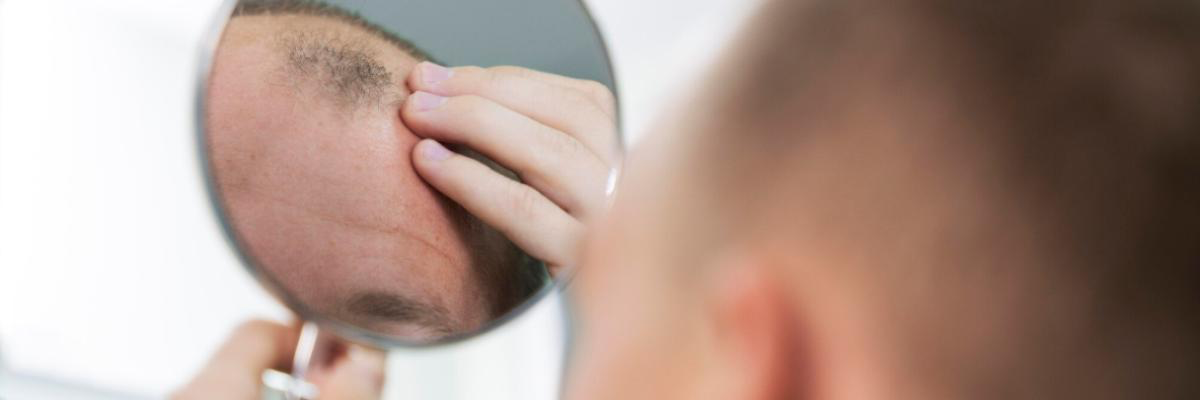Experiencing hair loss can be a distressing event, and understanding its cause is the first step toward finding a solution. While many people use the terms hair loss and baldness interchangeably, there are different conditions that lead to thinning hair. A crucial distinction exists between androgenetic alopecia (pattern baldness) and alopecia areata, an autoimmune disorder. Recognizing the unique signs of alopecia areata versus common pattern baldness is essential, as they stem from different causes and require distinct treatment approaches from a qualified professional.
At Doral Health & Wellness, we are proud of our commitment to provide integrated, comprehensive health services. Our team of specialists offers clear and supportive guidance, empowering you to make confident decisions about your health. We are dedicated to delivering reliable care to our community.
Distinguishing Between Alopecia Areata and Pattern Baldness
While both conditions result in hair loss, their underlying mechanisms and presentation are very different. A definitive diagnosis from a skin doctor is essential for proper management.
What is Pattern Baldness?
Androgenetic alopecia, commonly known as male or female pattern baldness, is the most frequent cause of hair loss. It is primarily driven by genetic predisposition and the effects of hormones, specifically dihydrotestosterone (DHT).
Key Characteristics of Pattern Baldness:
- Gradual Onset – This type of hair loss occurs slowly over many years.
- Predictable Pattern – In men, it typically begins with a receding hairline and thinning at the crown, eventually leading to partial or complete baldness. In women, it usually presents as diffuse thinning over the top of the scalp, with the frontal hairline often remaining intact.
- Miniaturization of Follicles – The hair follicles shrink over time, producing progressively finer and shorter hairs until they stop producing hair altogether.
- Hereditary Link – A family history of baldness is a very strong predictor.
What is Alopecia Areata?
Alopecia areata is an autoimmune disease. In this condition, the body’s immune system mistakenly attacks its own hair follicles, causing hair to fall out. It is not caused by hormones or genetics in the same way as pattern baldness.
Key Characteristics of Alopecia Areata:
- Sudden Onset – The hair loss is often rapid, occurring over a period of weeks.
- Patchy Hair Loss – The most common presentation is the sudden appearance of one or more round, smooth, completely bare patches on the scalp or elsewhere on the body (like the beard or eyebrows).
- Unpredictable Course – The hair may regrow on its own and then fall out again. The extent of the hair loss can vary from small patches (alopecia areata), to the entire scalp (alopecia totalis), to the entire body (alopecia universalis).
- No Visible Scarring – The skin in the bald patches appears smooth and normal, without signs of inflammation or scarring.
The Diagnostic Process: Why a Skin Doctor is Essential
Because the treatments for these conditions are vastly different, self-diagnosing can lead to frustration and ineffective care. A professional evaluation is necessary to determine the correct cause of your hair loss.
What to Expect During a Consultation
When you see a specialist, perhaps after searching for a “dermatologist near me” or “skin doctor near me,” they will conduct a thorough assessment.
- Physical Examination – A skin doctor will carefully examine your scalp, hair, and nails. They will look at the pattern of the hair loss and the condition of your scalp to identify tell-tale signs.
- Medical History – Your doctor will ask about your family history of hair loss, the timing of your symptoms, and any other medical conditions you may have, as alopecia areata can sometimes be associated with other autoimmune diseases.
- Pull Test – Your doctor may gently pull on a small section of your hair to see how many strands come out.
- Scalp Biopsy – In some cases, a small sample of your scalp skin may be taken for microscopic examination to confirm the diagnosis.
A trusted skin doctor in NY can provide the expertise needed for a precise diagnosis.
Comparing Treatment Strategies
Once an accurate diagnosis is made, your dermatologist will recommend a treatment plan tailored to your specific type of hair loss.
Treatments for Pattern Baldness
Management for androgenetic alopecia focuses on slowing the progression of hair loss and stimulating regrowth from miniaturized follicles.
- Minoxidil (Rogaine) – A topical solution available over-the-counter that can help slow hair loss and promote new growth.
- Finasteride (Propecia) – An oral prescription medication for men that works by blocking the production of DHT.
- Light Therapy and Procedures – Low-level laser therapy, platelet-rich plasma (PRP) injections, and hair transplantation are other options offered by specialists. A “botox dermatologist” may also offer related cosmetic procedures.
Treatments for Alopecia Areata
Treatment for alopecia areata aims to suppress the immune system’s attack on the hair follicles to allow hair to regrow.
- Corticosteroids – These can be administered as injections directly into the bald patches, applied as a topical cream, or taken orally to reduce inflammation.
- Topical Immunotherapy – This involves applying a chemical to the scalp to create a mild allergic reaction, which distracts the immune system from attacking the hair follicles.
- JAK Inhibitors – Newer oral medications called Janus kinase (JAK) inhibitors are a significant advancement in treating severe alopecia areata.
Finding the “best dermatologist in New York” or a local “skin doctor brooklyn” can provide you with access to these advanced treatments.
If you are experiencing hair loss, do not assume it is simply hereditary baldness. Understanding the potential for an autoimmune cause like alopecia areata is crucial. A definitive diagnosis from a board-certified dermatologist is your most important step toward getting an effective treatment plan. Whether you start with a search for a “skin doctor near me” or a “skin doctor brooklyn,” seeking professional care is the key to managing your condition and promoting hair regrowth.
For expert dermatological care and to receive a comprehensive evaluation for your hair loss, contact Doral Health & Wellnesstoday at 1-718-365-2555 or visit us at 1797 Pitkin Avenue, Brooklyn, New York 11212. Our team of dedicated professionals is here to provide the supportive, personalized care you need to find answers. For general information about Doral Health & Wellness services, you can contact or email info@doralhw.org.






